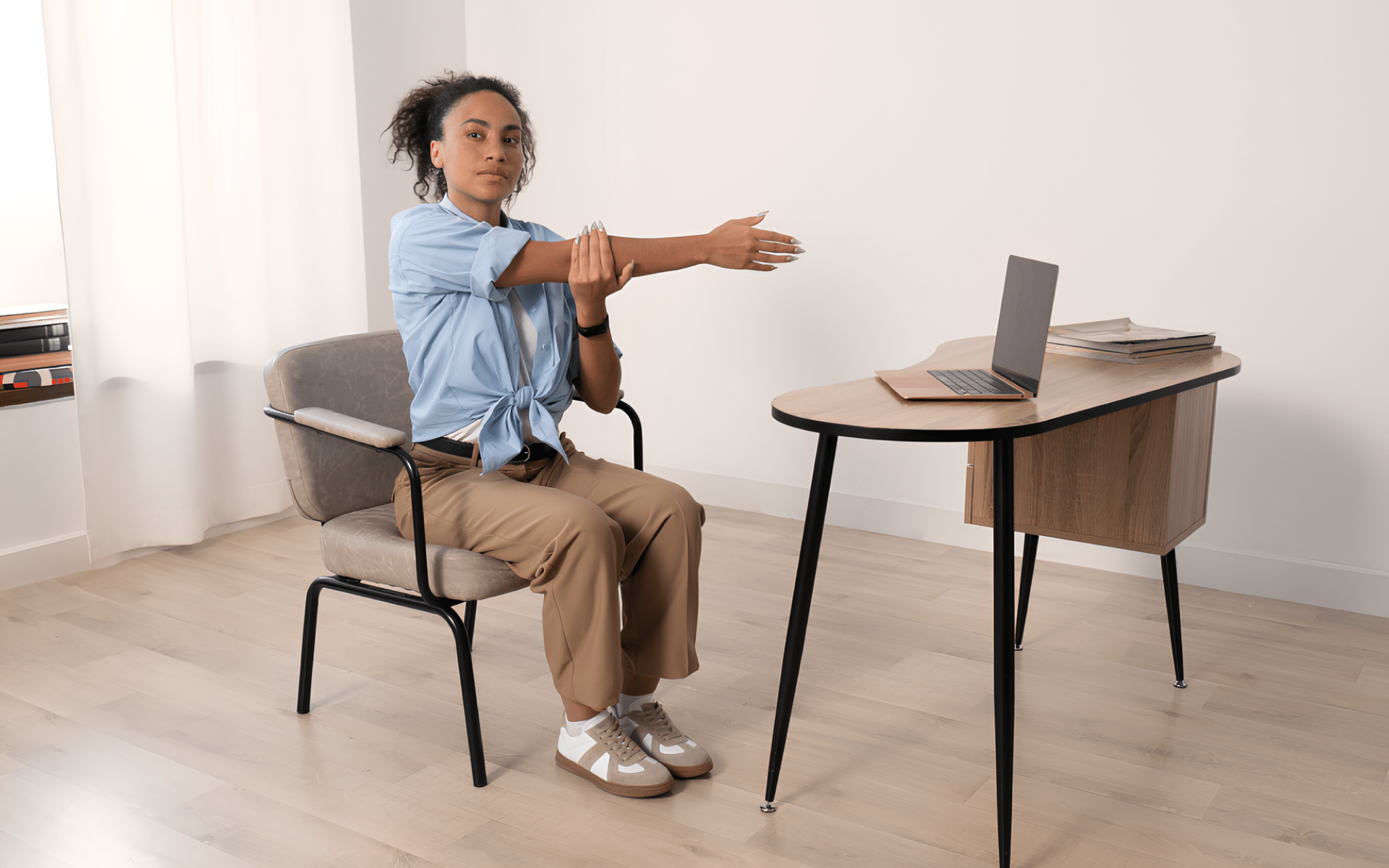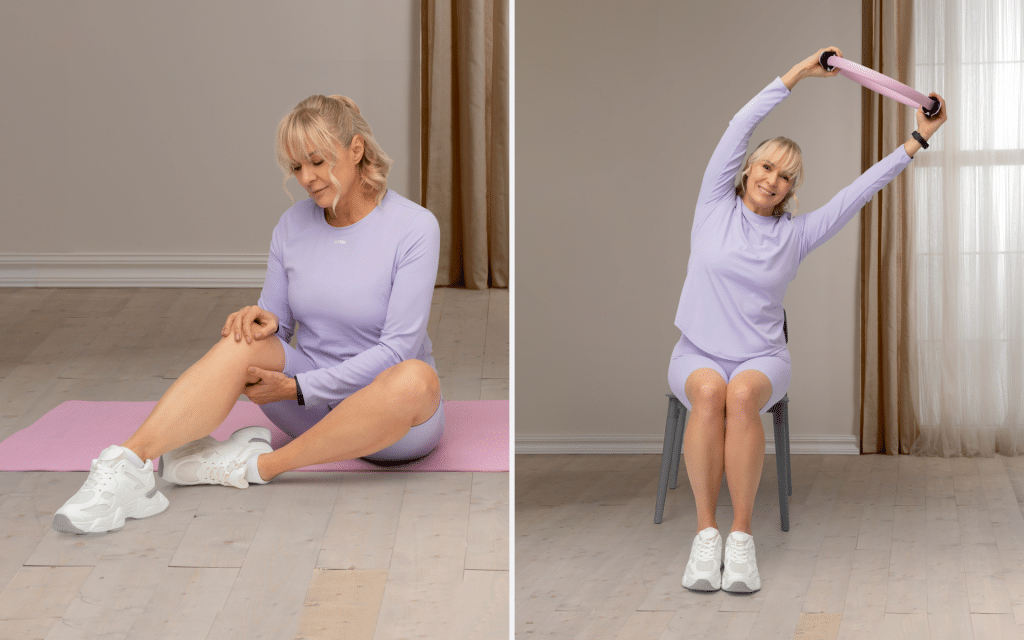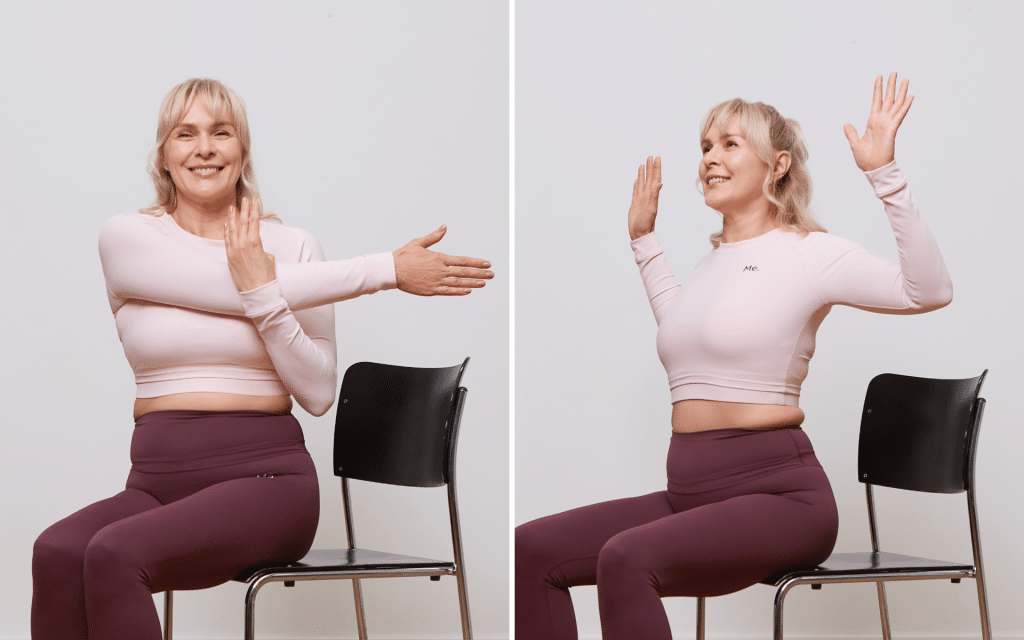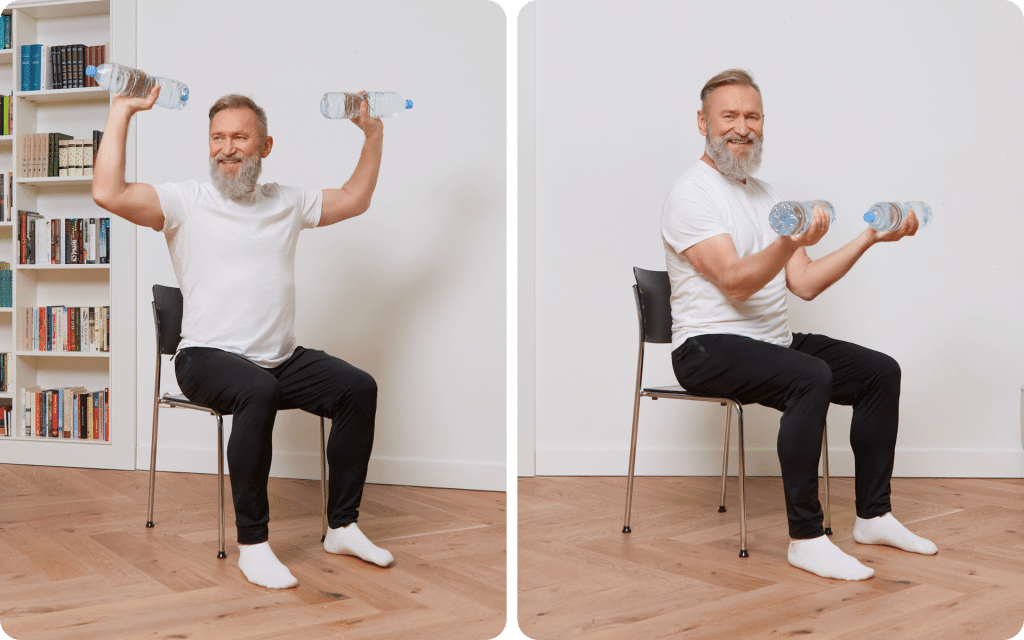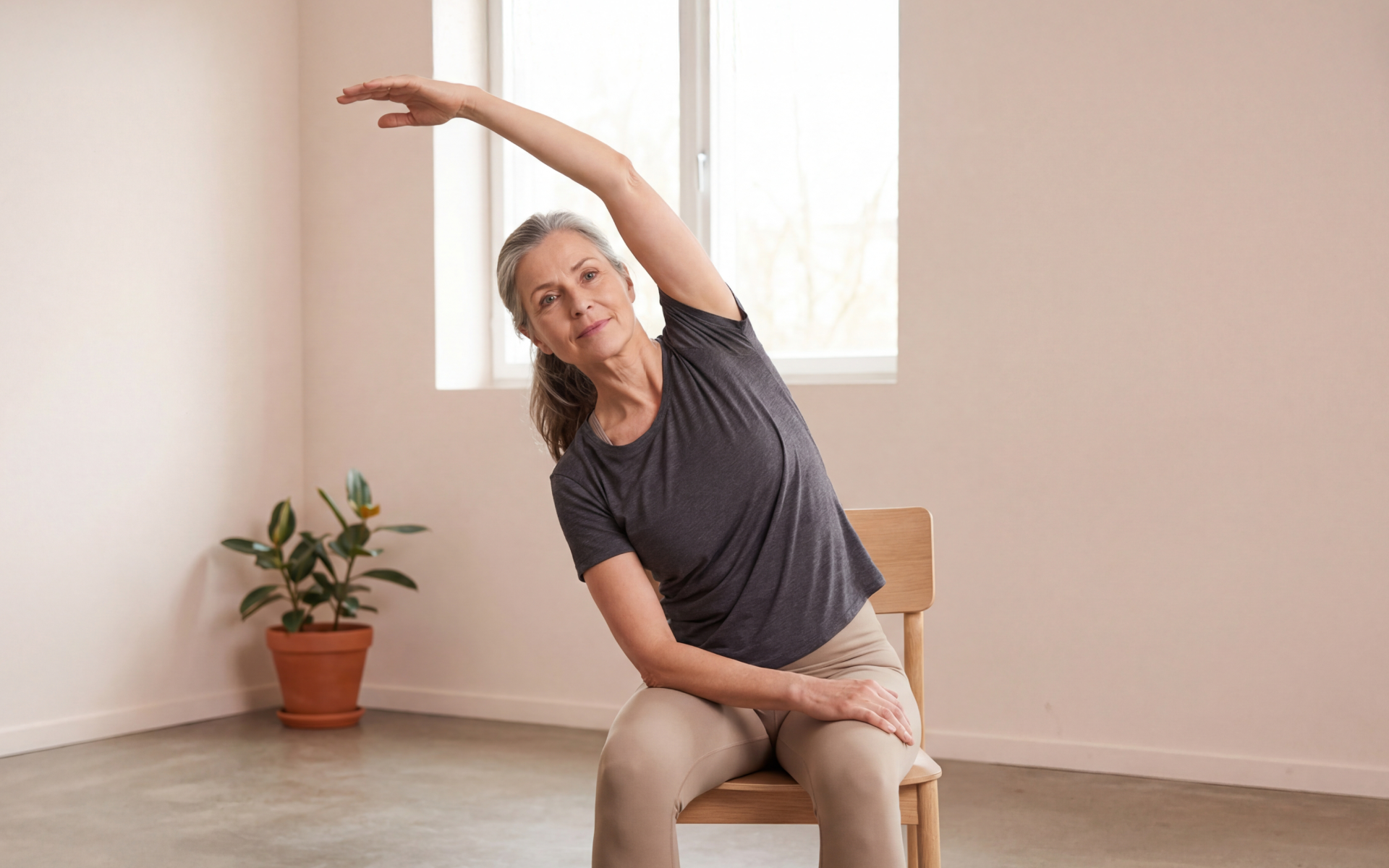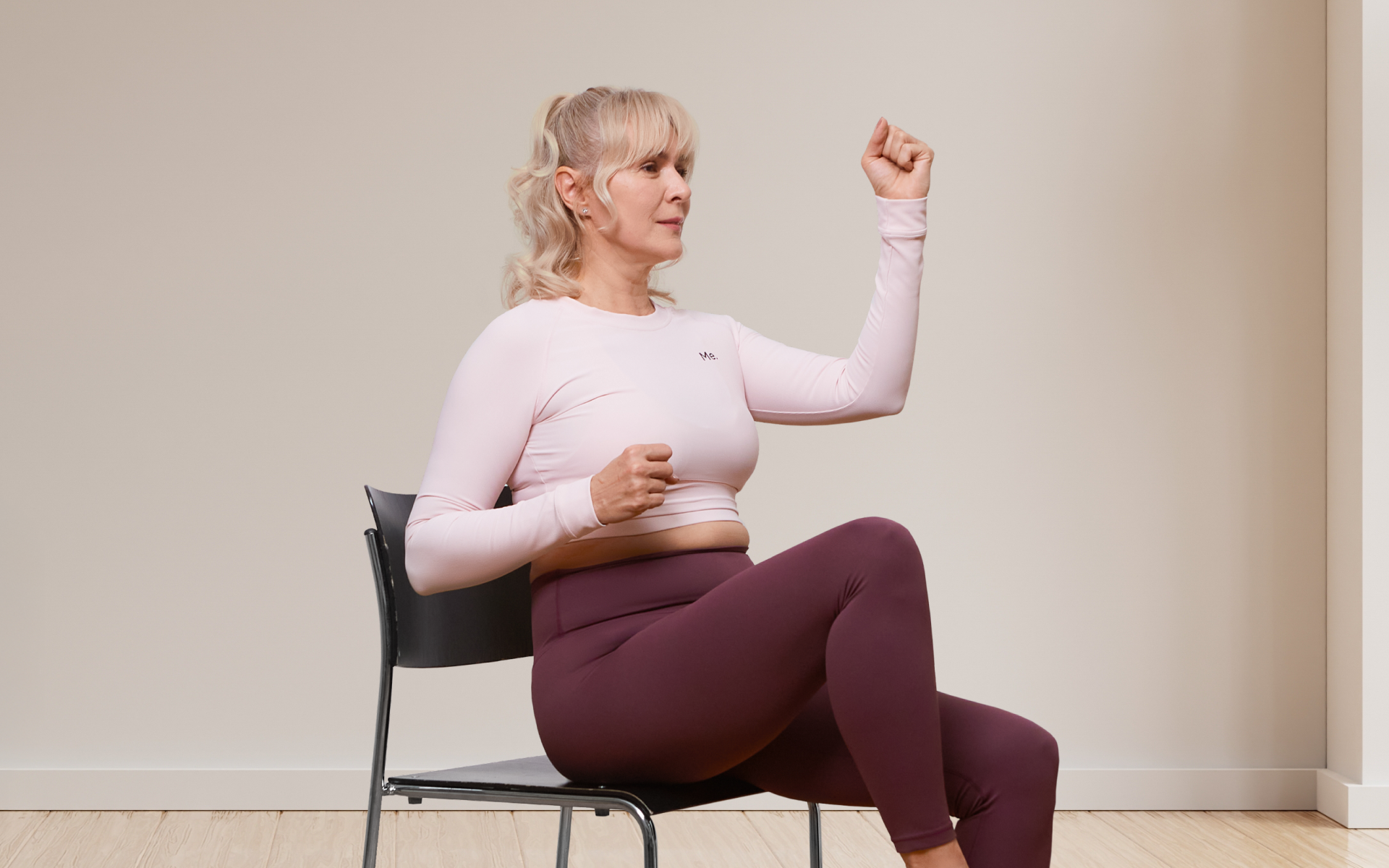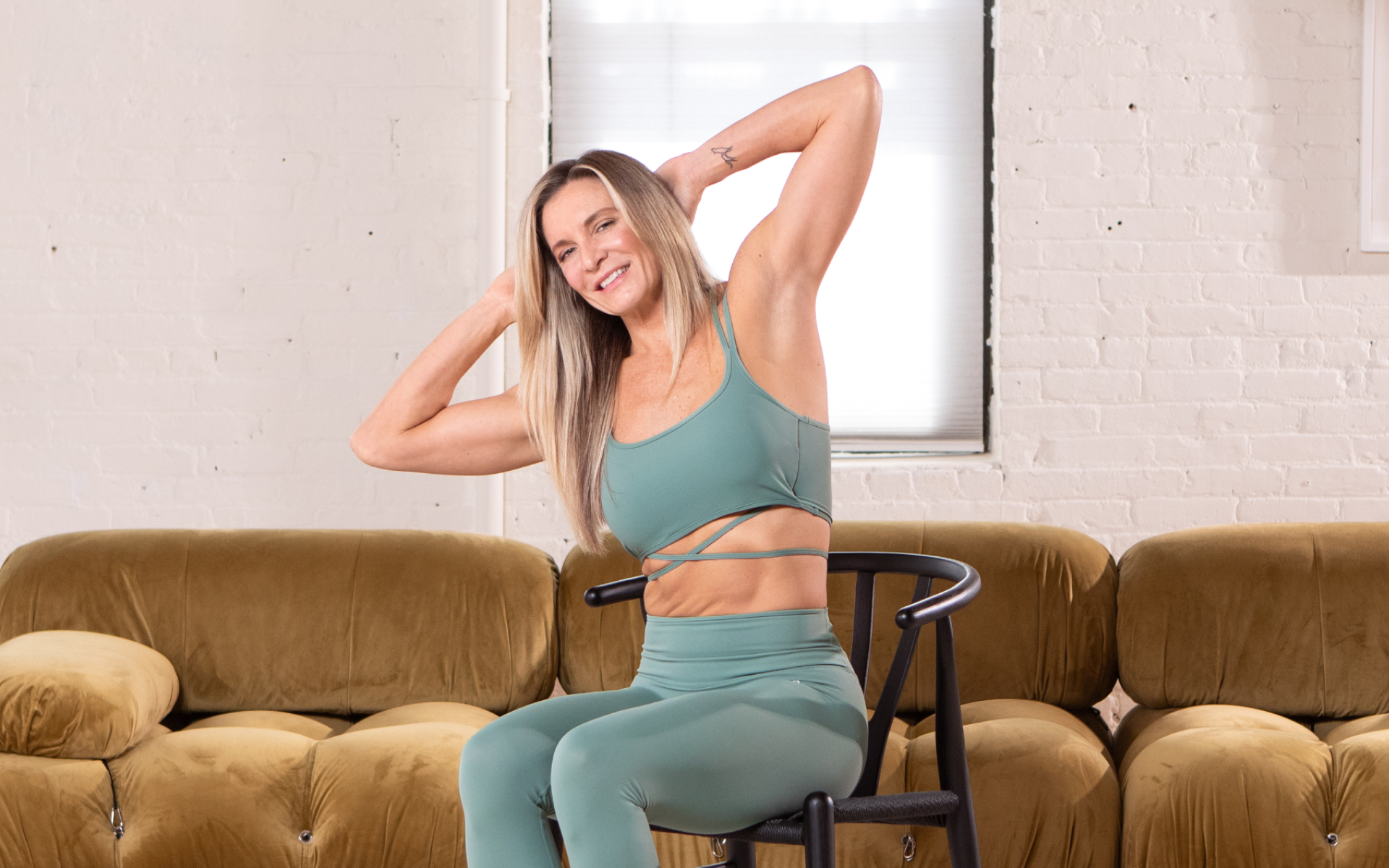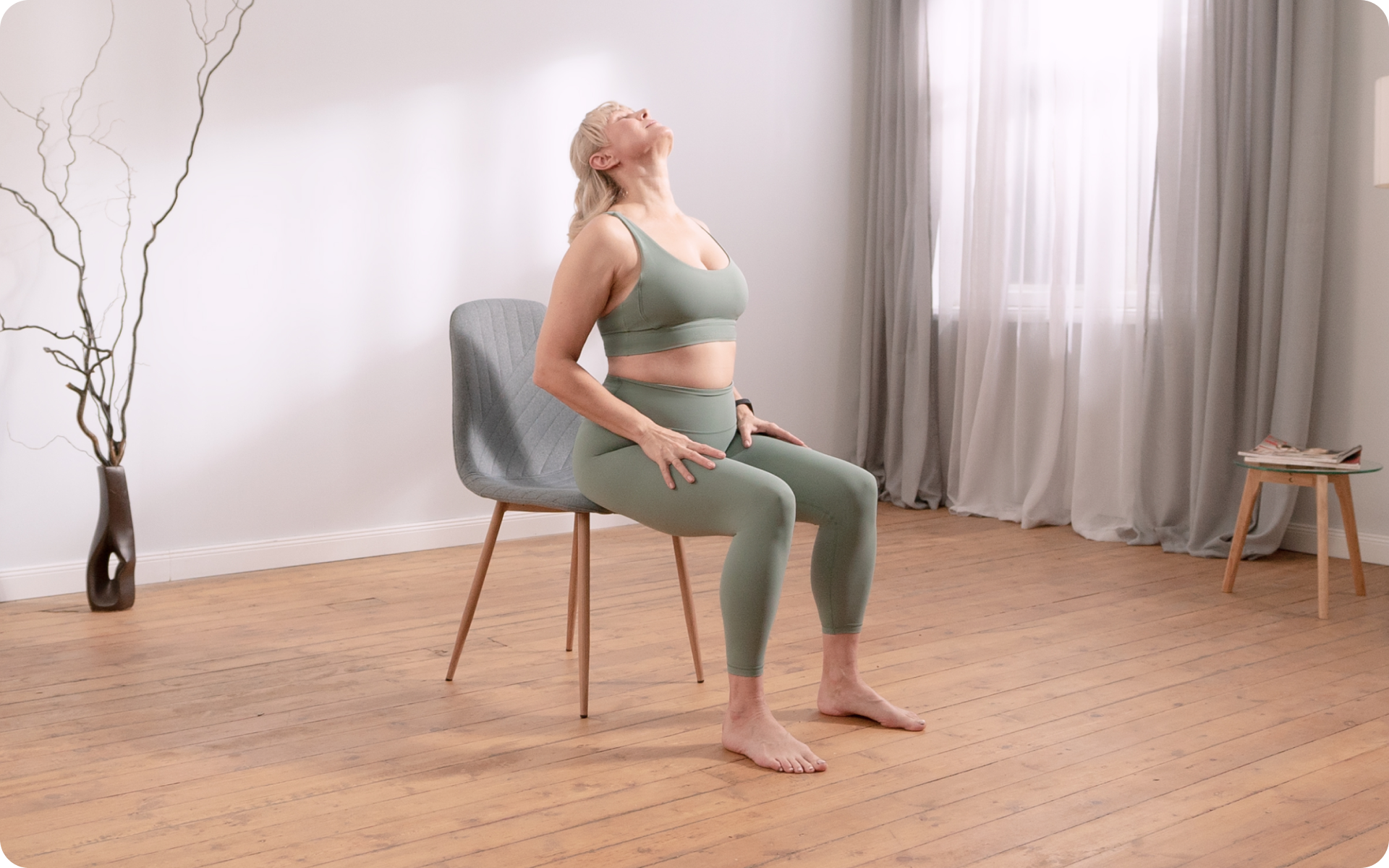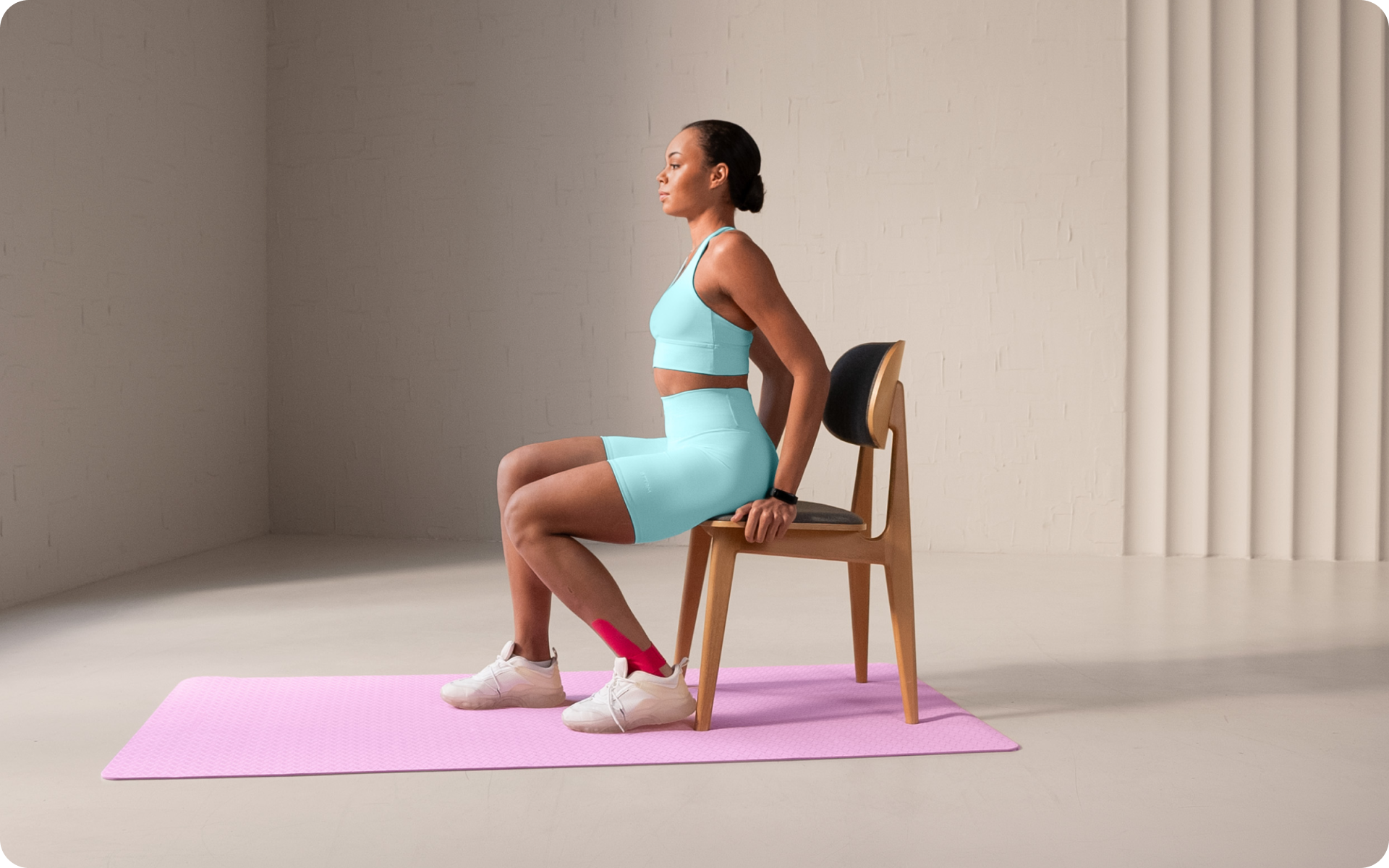Desk jobs offer stability, a comfortable working environment, and often great pay. They are considered low-risk for physical injury compared to other jobs such as construction or manufacturing (1).
However, they come with a few downsides, one of which is the sedentary nature of the work.
Apparently, work hours account for nearly half of total weekly sedentary time, which makes office work a significant contributor to overall sedentary exposure (1).
Even worse, office workers often carry sedentary habits into their leisure time, which leads to a more inactive lifestyle overall.
Research has reported that prolonged sedentary bouts (greater than 30 minutes) and lack of breaks are strongly associated with increased health risks, including cardiometabolic disorders (2).
One way to reduce the negative impact of prolonged sitting is to incorporate regular stretching breaks throughout the workday.
Stretching can improve flexibility and mobility, reduce muscle tension, and prevent common desk job ailments such as neck and back pain (3).
Here are seven desk stretches you can do to help combat the sedentary nature of office work and everything else you need to know.
What Muscles Get Tight from Sitting for Too Long?
The hips, hamstrings, chest, and shoulders are common areas that can become tight from prolonged sitting.
Prolonged sitting doesn’t just tighten muscles, it also weakens opposing muscle groups (e.g. the glutes, core, and upper-back extensors), which creates muscular imbalances. These imbalances can lead to poor posture, reduced mobility, and chronic pain.
1. Hip Flexors (Iliopsoas and Rectus Femoris)
Sitting keeps the hip flexors in a shortened position for extended periods, which leads to adaptive shortening and tightness (4). Tight hip flexors can contribute to anterior pelvic tilt, lower-back pain, and reduced hip mobility.
2. Hamstrings
While sitting, the hamstrings are in a semi-contracted state, which can lead to stiffness over time (5). Tight hamstrings can limit hip and knee mobility and increase strain on the lower back.
3. Gluteal Muscles (Gluteus Maximus, Medius, and Minimus)
Prolonged sitting leads to inactivity of the glutes, often referred to as “gluteal amnesia” or “dead butt syndrome”. This can cause compensatory tightness in surrounding muscles. Weak and tight glutes can lead to poor posture, hip instability, and lower-back pain (6).
4. Lower-Back Muscles (Erector Spinae and Quadratus Lumborum)
Poor sitting posture, such as slouching, can overwork the lower-back muscles, leading to tightness and discomfort. Chronic tightness in these muscles can contribute to lower-back pain and reduced spinal mobility (7).
5. Chest Muscles (Pectoralis Major and Minor)
Sitting with a forward-leaning posture or rounded shoulders shortens the chest muscles. Tight chest muscles can pull the shoulders forward, resulting in poor posture and upper-back pain (8).
6. Neck and Shoulder Muscles (Upper Trapezius, Levator Scapulae, and Sternocleidomastoid)
Prolonged sitting, especially with poor ergonomics, often involves a forward head posture, which strains these muscles (9). Tightness in these muscles can lead to neck pain, tension headaches, and shoulder discomfort.
7. Calves (Gastrocnemius and Soleus)
Sitting restricts ankle movement and keeps the calves in a shortened position. Tight calves can limit ankle mobility and contribute to issues such as plantar fasciitis or Achilles tendon discomfort (10).
Read more: BetterMe Chair Yoga Overview (2025)
What Are Some Stretches to Do at Your Desk?
These stretches are quick, gentle, and suitable for an office environment.
1. Hip Flexor Stretch (Seated or Standing)
Targets: Hip flexors (Iliopsoas, Rectus Femoris)
Standing variation:
- Stand next to your desk and step your right leg back into a staggered stance.
- Keep your torso upright, bend your front knee slightly, and shift your weight forward.
- You should feel a stretch in your hip flexor of the extended leg.
- Hold for 20-30 seconds, then switch legs.
Seated variation:
- Sit at the edge of your chair with your left leg planted on the ground.
- Extend your right leg back, aiming to straighten it as much as possible.
- Lean slightly forward for a deeper stretch.
- Hold for 20-30 seconds, then switch sides.
2. Hamstring Stretch (Seated Stretch)
Targets: Hamstrings (back of the thighs)
- Sit on the edge of your chair and straighten one leg with the heel resting on the floor.
- Keep your torso tall and tilt forward from the hips (not the back), reaching toward your toes.
- You’ll feel a stretch along the back of your thigh.
- Hold for 20-30 seconds, then repeat on the other leg.
The BetterMe: Health Coaching app will provide you with a host of fat-frying fitness routines that’ll scare the extra pounds away and turn your body into a masterpiece! Get your life moving in the right direction with BetterMe!
3. Glute Stretch (Figure-4 Stretch)
Targets: Gluteus Maximus and Piriformis
- While sitting in your chair, cross your right ankle over your left knee, making a “figure 4” shape.
- Keep your back straight and gently press down on your right knee with your right hand for a deeper stretch.
- You can lean forward slightly for added intensity.
- Hold for 20-30 seconds, then switch sides.
4. Seated Spinal Twist
Targets: Lower back (Erector Spinae) and obliques
- Sit tall in your chair with both feet flat on the ground.
- Place your left hand on the outside of your right thigh and your right hand on the backrest of your chair.
- Slowly twist your torso to the right, looking over your shoulder. Avoid forcing the movement – only stretch to your comfort level.
- Hold for 15-20 seconds, then switch sides.
5. Chest Opener (Edge-of-Desk Stretch)
Targets: Pectoralis Major and Minor
- Stand facing the corner of your desk or a wall.
- Place both palms or forearms on the surface at shoulder height or slightly below.
- Step forward slightly, allowing your chest to lower while keeping your back straight.
- You should feel a gentle stretch in the chest and front shoulders.
- Hold for 20-30 seconds.
6. Neck and Shoulder Stretch (Upper Trapezius Release)
Targets: Upper Trapezius, Levator Scapulae, and Sternocleidomastoid
Neck stretch:
- Sit tall and drop your right ear toward your right shoulder.
- For a deeper stretch, gently place your right hand on the side of your head and apply light pressure.
- Hold for 20-30 seconds, then switch sides.
Shoulder stretch:
- Sit tall and clasp your hands behind your lower back.
- Lift your arms slightly while pulling your shoulders back and down.
- Hold for 20-30 seconds.
7. Calf Stretch
Targets: Gastrocnemius and Soleus (calves)
Seated Calf Stretch
- Sit on your chair with both feet flat on the ground.
- Straighten your right leg, keeping your heel on the floor and your toes pointing toward the ceiling.
- Flex your foot back toward your shin until you feel a stretch in your calf.
- Hold for 20-30 seconds, then switch to the other leg.
Standing Calf Stretch
- Stand facing a wall or the edge of your desk for support.
- Step back with your right leg, keeping it straight and your heel firmly on the ground.
- Bend your front knee slightly to deepen the stretch in the right calf.
- Hold for 20-30 seconds, then switch legs.
How Often Should I Stretch if I Sit All Day?
Experts generally recommend changing postural positioning every 30 to 60 minutes if you’re sedentary for extended periods (11). This could mean moving from sitting to standing, getting up and walking around for a minute, or doing some light stretches. This doesn’t mean you need to dedicate 15 minutes to a full routine each time – just a few simple stretches or movements can make a big difference. The goal is to keep your muscles active, relieve tension, and prevent tightness from building up.
For example, the Centers for Disease Control and Prevention (CDC) suggests incorporating short breaks where you can stretch or move for 1-2 minutes for every 30 minutes of sitting (12). This consistent movement helps combat the “static posture” effect, where certain muscles remain locked in the same position and can develop imbalances.
Is Stretching While Sitting Good?
Stretching while sitting can definitely be good. It offers an effective way to ease tension, increase flexibility, and improve circulation without requiring you to leave your chair. This is particularly valuable for individuals who spend long hours at a desk or commuting.
However, seated stretching isn’t a complete substitute for standing or dynamic stretches. Seated stretching tends to be less engaging for large muscle groups, such as your hamstrings, quads, and glutes, which are essential for overall mobility.
For these reasons, it’s a good idea to pair seated stretches with movement breaks where you stand up, walk, or perform dynamic stretches such as lunges or arm swings. This combination will more effectively address the postural and muscular imbalances that are caused by prolonged sitting.
How Do I Loosen My Hips from Sitting All Day?
Loosening your hips after a day of sitting is about balance – stretching tight muscles while strengthening weak ones to restore proper alignment and functionality.
Stretching is essential as it counteracts tightness by elongating those shortened muscles. Imagine your hip flexors as rubber bands that have been held in a contracted state for hours.
Stretching helps gradually restore their natural length, relieving tension and improving your range of motion (3). By regularly stretching tight areas, you give your joints the freedom to move through their full range, which reduces the risk of discomfort and long-term stiffness.
However, stretching alone isn’t the full solution. This is where strengthening plays a vital role. Sitting tightens the hip flexors and suppresses key stabilizing muscles such as the glutes and deep core.
Think of these muscles as the support team for your hips – they stabilize and protect against strain during movements. When they’re weak, the hips must work harder, and the imbalance worsens. Strengthening wakes up these dormant muscles, which corrects the imbalance and gives your hips the support they need to function properly (13).
Stretching and strengthening work together as they address both sides of the equation. Stretching reduces tightness, while strengthening builds stability and function.
Without strengthening, you risk re-tightening the same areas over time as your hips remain unsupported. Similarly, without stretching, your efforts to strengthen won’t resolve the underlying tension that restricts movement.
Together, these approaches improve mobility, prevent discomfort, and promote better posture. By balancing muscle length and strength, you support the ability of your hips to move freely and efficiently, which creates a foundation for long-term health.
How Do I Repair My Muscles from Sitting for Too Long?
While stretching is beneficial, a more comprehensive approach is necessary to truly repair and restore your body. Here’s how you can tackle the issue in a well-rounded way.
Build Strength in Key Muscle Groups
Prolonged sitting often leads to weak glutes, core muscles, and upper back while overloading the hip flexors and lower back. Strengthening these weakened areas can correct imbalances and improve postural control (3).
Exercises to Include in Your Routine:
- Glute Bridges: Strengthens the glutes and relieves lower-back pressure.
- Planks: Primary core builder for stability and spinal support.
- Rows or Reverse Flyes (with resistance bands or light weights): Targets the upper back.
Start with 2-3 sessions per week, aiming for 2-3 sets of each exercise.
Correct Your Posture
Prolonged postures can lead to excess stress on your muscles, particularly in the neck, shoulders, and lower back.
For years, the advice on “correct posture” was based on the idea that there is a single, ideal way to sit or stand. However, recent research has shifted focus toward postural variability. The emerging view is that no posture is inherently “bad” or “perfect” – the key is movement and adaptability throughout the day (14).
Remaining in one position, even a seemingly “correct” one, for long periods can strain muscles, reduce circulation, and lead to discomfort. Physiotherapists and ergonomists now emphasize that “your next posture is your best posture” (14).
This means it’s less about rigidly adhering to a single way of sitting and more about regularly changing positions to keep your body active and engaged.
Posture Tips:
- Use an ergonomic chair with adjustable features such as lumbar support and armrests to promote proper alignment.
- Keep your feet flat on the ground with your knees at a 90-degree angle to avoid excessive pressure on your lower back.
BetterMe: Health Coaching app helps you achieve your body goals with ease and efficiency by helping to choose proper meal plans and effective workouts. Start using our app and you will see good results in a short time.
Adjust Your Workspace Ergonomics
An ergonomic workstation refers to a setup that promotes comfort, efficiency, and safety. When your workstation is correctly configured, you’ll be less likely to experience strain and fatigue.
How to Optimize Your Setup:
- Use a chair with proper lumbar support to maintain your natural spinal curve.
- Set your monitor at eye level to prevent forward head posture.
- Position your keyboard and mouse so your wrists stay neutral and your elbows are at approximately a 90-degree angle.
- Try a sit-stand desk if available, as this allows you to alternate between sitting and standing every hour.
- Use a footrest or box to support your feet if they don’t reach the floor.
Stay Hydrated
Muscles can become stiff and fatigued if you’re not properly hydrated (15). This is often overlooked but plays a crucial role in recovery.
Simple Strategies:
- Aim to drink at least 8 cups of water a day (more if you’re active).
- Reduce caffeine and sugary drinks that can dehydrate you.
- Snack on fruits such as watermelon or oranges to boost hydration through your diet.
Move Frequently Throughout the Day
Periodic movement increases blood flow, reduces stiffness, and engages muscles that are underutilized during sitting (16).
Integrate Movement Breaks:
- Use the 30/30 rule – stand or move for at least 30 seconds to 2 minutes every 30 minutes of sitting.
- Walk around the office, take the stairs, or march in place to get your blood flowing.
- Set a timer or use a reminder app to stay consistent.
Use Foam Rolling and Massage for Relief
Muscle fascia and trigger points can become tight from immobility. Foam rolling and massages are excellent tools for loosening these areas and improving circulation (17).
Where and How to Focus:
- Roll your lower back, quads, hamstrings, and glutes with a foam roller. Move slowly over tight areas, pausing on tender spots for approximately 10-15 seconds.
- Use a massage ball for smaller, localized areas such as the shoulders or around your glutes.
- Consider a professional massage for stubborn tension or pain.
Stay Active Outside of Work
Your muscles will recover better if you make movement a regular part of your life, even when away from your desk. Active habits outside of work improve overall muscle conditioning, which counteracts the sedentary effects of desk work.
Ideas for an Active Lifestyle:
- Try low-impact activities such as yoga or Pilates, which build strength and flexibility.
- Incorporate 30 minutes of walking, cycling, or another form of cardiovascular activity into your daily routine.
- Take short, active routes to work or errands, such as walking instead of driving when possible.
Read more: Chair Yoga Routine for Seniors: 8 Exercises for a Full-Body Workout at Home
Checklist: Staying Healthy and Fit While Sitting at Your Desk All Day
| Checklist Item | Explanation/Action Step |
|---|---|
| Take regular movement breaks | Stand up, stretch, or walk for at least 5 minutes every 30-60 minutes to improve circulation and reduce stiffness. |
| Optimize your desk ergonomics | Ensure your chair, desk, and monitor are properly aligned for comfort and to prevent strain on your neck, back, and shoulders. |
| Practice good sitting posture | Sit upright with your back supported, shoulders relaxed, and neck aligned with your spine to avoid slouching-related strain. |
| Stretch throughout the day | Perform stretches such as spinal twists or shoulder rolls to release tension and improve flexibility. |
| Strengthen postural muscles | Build strong core and glute muscles after work to support your spine and prevent imbalances that are caused by sitting. |
| Adjust your screen time habits | Follow the 20-20-20 rule - every 20 minutes, look at something 20 feet away for 20 seconds to reduce eye strain. |
| Stay hydrated | Drink water regularly to maintain your energy, concentration, and overall health. Keep a water bottle at your desk as a reminder. |
Sitting for extended periods often weakens the glutes, abdominal muscles, and deep stabilizers of the spine, such as the transverse abdominis and multifidus. This happens because these muscles are underutilized while sitting, which leads to deconditioning. At the same time, sitting for long periods of time places excess stress on the hip flexors and lower-back muscles, which can become tight and overworked as a result. Standing all day at your desk isn’t ideal. While alternating between sitting and standing can improve circulation and reduce muscle strain, prolonged static standing can lead to postural pain just as any other held posture can. The key is to find a balance. Research has suggested that transitioning between sitting and standing every 30 to 60 minutes can minimize negative effects on your body (11). According to research on sedentary behavior, consistently sitting for more than 30 to 60 minutes at a time can negatively affect your health (11). Prolonged sitting slows your metabolism, reduces blood flow, and increases the risk of musculoskeletal pain and conditions such as cardiovascular disease. Experts recommend taking brief movement breaks every 30 minutes to counteract these effects (11). Office workers should stretch to alleviate muscle tension, improve flexibility, and counteract imbalances that are caused by prolonged sitting. Stretching reduces discomfort in areas such as the neck, shoulders, lower back, and hips, which are commonly affected by desk work. Regular stretching also promotes improved blood flow, supports postural variation, and enhances overall physical well-being, particularly when sitting for long hours.Frequently Asked Questions
What muscles get weak from sitting?
Is it good to stand all day at your desk?
How long is too long to sit at a desk?
Why should office workers stretch?
The Bottom Line
Desk stretches are a simple yet powerful way to combat the negative effects of prolonged sitting. By improving flexibility, easing muscle tension, and boosting circulation, they help reduce discomfort and support better posture. Regular stretching keeps your body feeling refreshed during busy work days and contributes to your long-term health and well-being.
DISCLAIMER:
This article is intended for general informational purposes only and does not serve to address individual circumstances. It is not a substitute for professional advice or help and should not be relied on for making any kind of decision-making. Any action taken as a direct or indirect result of the information in this article is entirely at your own risk and is your sole responsibility.
BetterMe, its content staff, and its medical advisors accept no responsibility for inaccuracies, errors, misstatements, inconsistencies, or omissions and specifically disclaim any liability, loss or risk, personal, professional or otherwise, which may be incurred as a consequence, directly or indirectly, of the use and/or application of any content.
You should always seek the advice of your physician or other qualified health provider with any questions you may have regarding a medical condition or your specific situation. Never disregard professional medical advice or delay seeking it because of BetterMe content. If you suspect or think you may have a medical emergency, call your doctor.
SOURCES:
- The contribution of office work to sedentary behaviour associated risk (2013, springer.com)
- Sedentary Behavior: Emerging Evidence for a New Health Risk (2010, nih.gov)
- Stretching: 9 Benefits (n.d., maine.gov)
- Prolonged sitting and physical inactivity are associated with limited hip extension: A cross-sectional study (2021, nih.gov)
- Are your hamstrings working double duty? (2019, harvard.edu)
- Are You at Risk for Dead Butt Syndrome? (2017, michiganmedicine.org)
- Effects of Prolonged Sitting with Slumped Posture on Trunk Muscular Fatigue in Adolescents with and without Chronic Lower Back Pain (2020, mdpi.com)
- Why good posture matters (2017, harvard.edu)
- Sitting Posture during Prolonged Computer Typing with and without a Wearable Biofeedback Sensor (2021, mdpi.com)
- Intrinsic ankle stiffness is associated with paradoxical calf muscle movement but not postural sway or age (2024, nih.gov)
- Rx for Prolonged Sitting: A Five-Minute Stroll Every Half Hour (2023, cuimc.columbia.edu)
- Prompts to Disrupt Sitting Time and Increase Physical Activity at Work (2011, cdc.gov)
- The Influence of Stretching the Hip Flexor Muscles on Performance Parameters. A Systematic Review with Meta-Analysis (2021,mdpi.com)
- Posture (n.d., physio-pedia.com)
- The Role of Water Homeostasis in Muscle Function and Frailty: A Review (2019, mdpi.com)
- The physiological benefits of sitting less and moving more: opportunities for future research (2022, nih.gov)
- THE EFFECTS OF SELF‐MYOFASCIAL RELEASE USING A FOAM ROLL OR ROLLER MASSAGER ON JOINT RANGE OF MOTION, MUSCLE RECOVERY, AND PERFORMANCE: A SYSTEMATIC REVIEW (2015, nih.gov)
